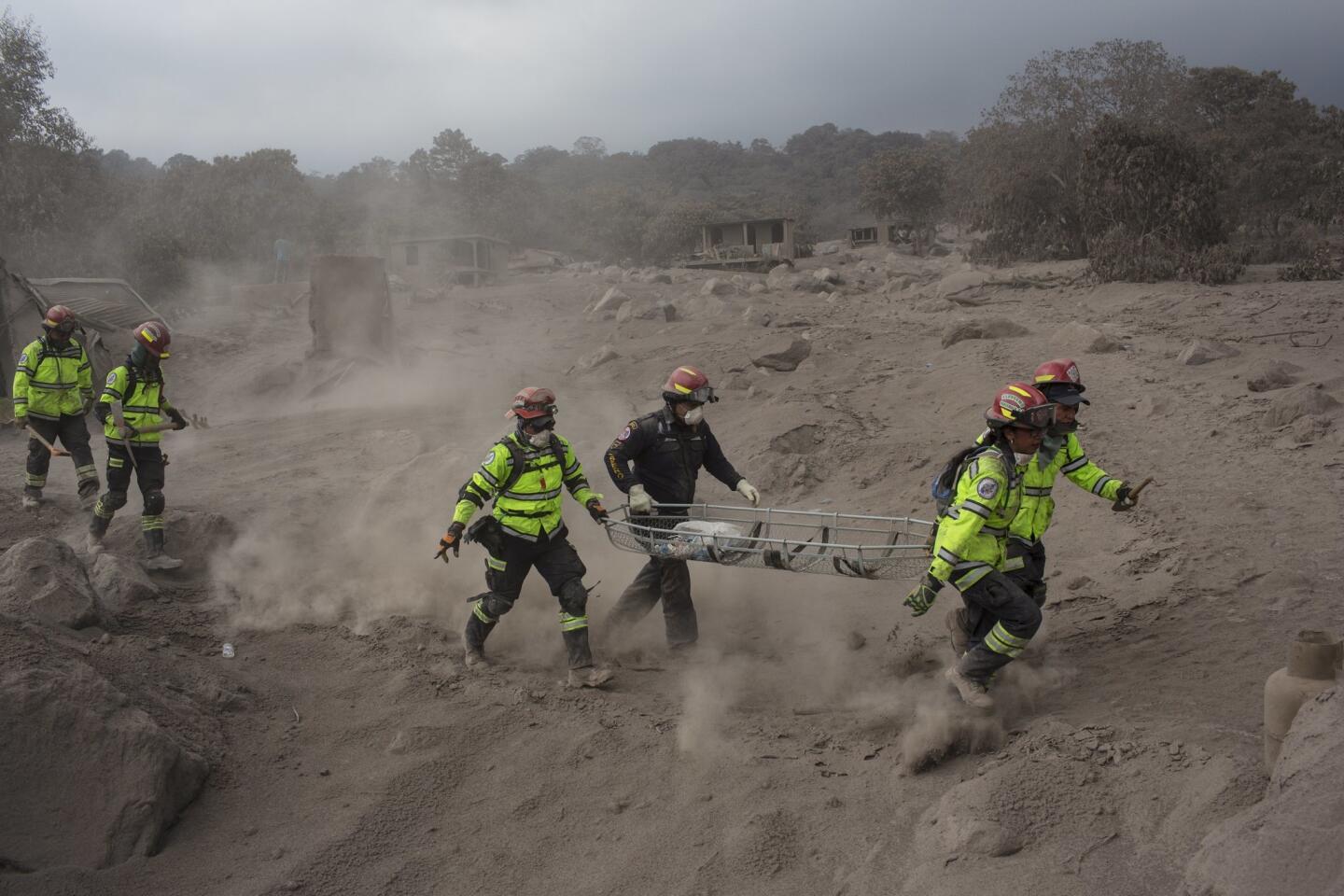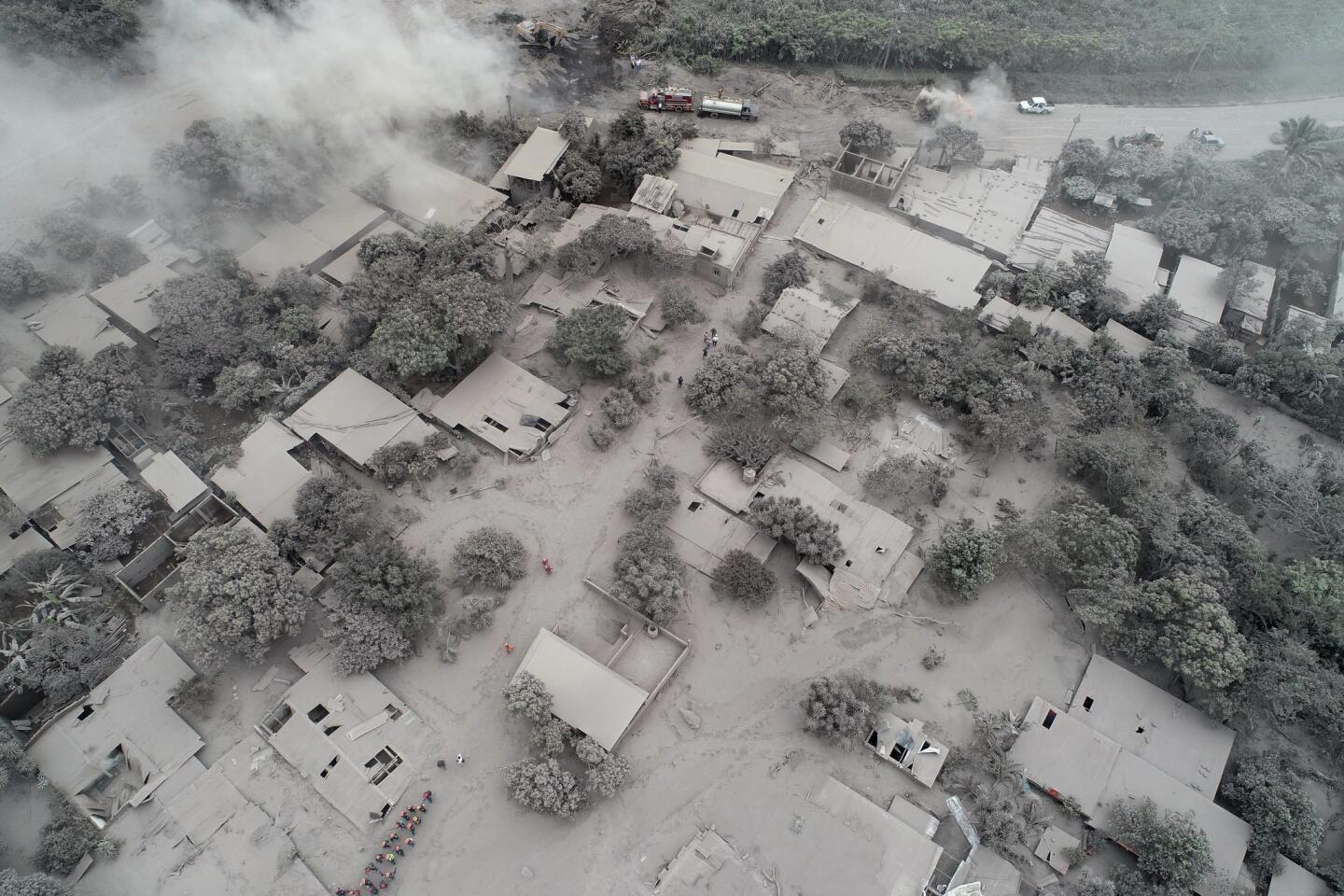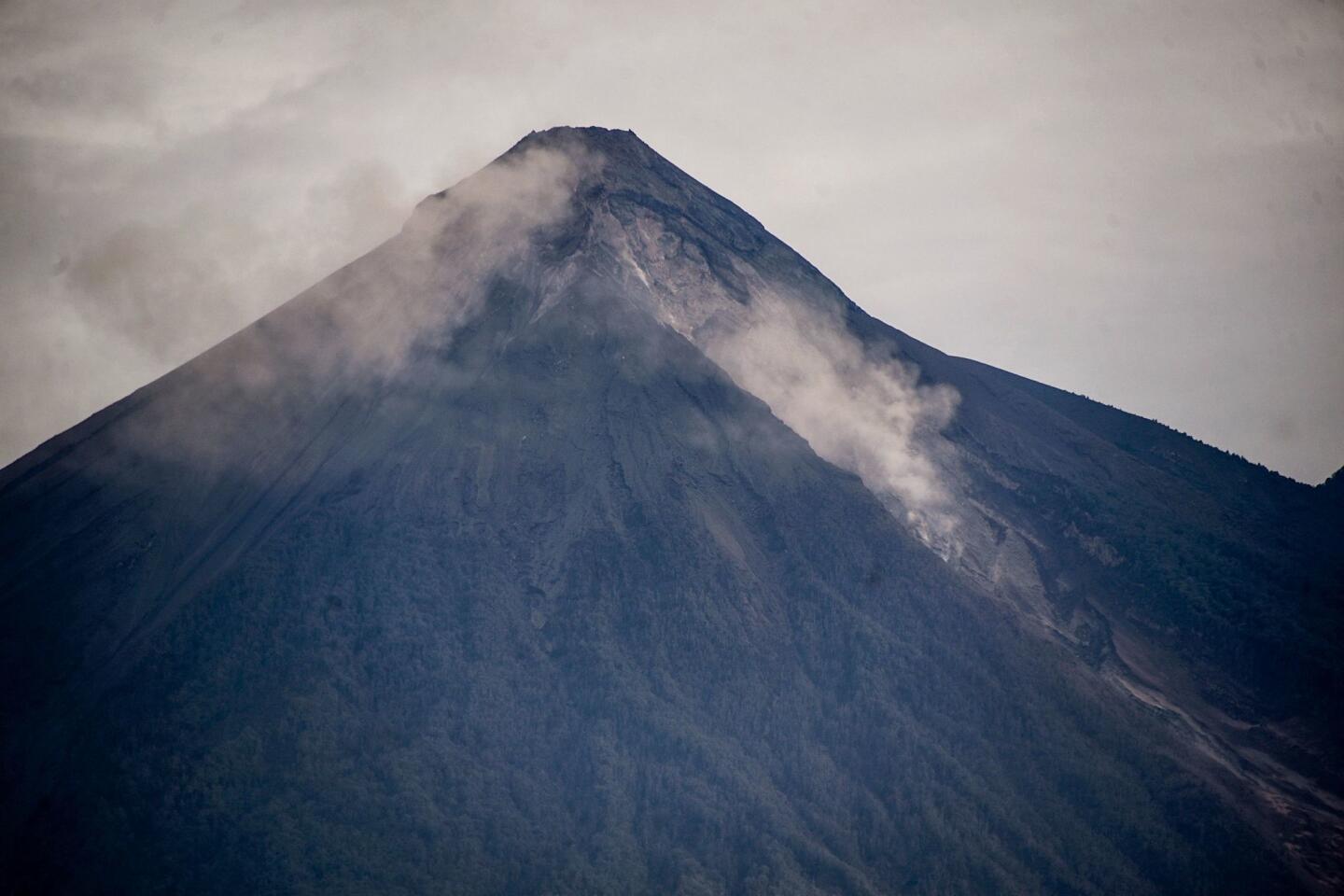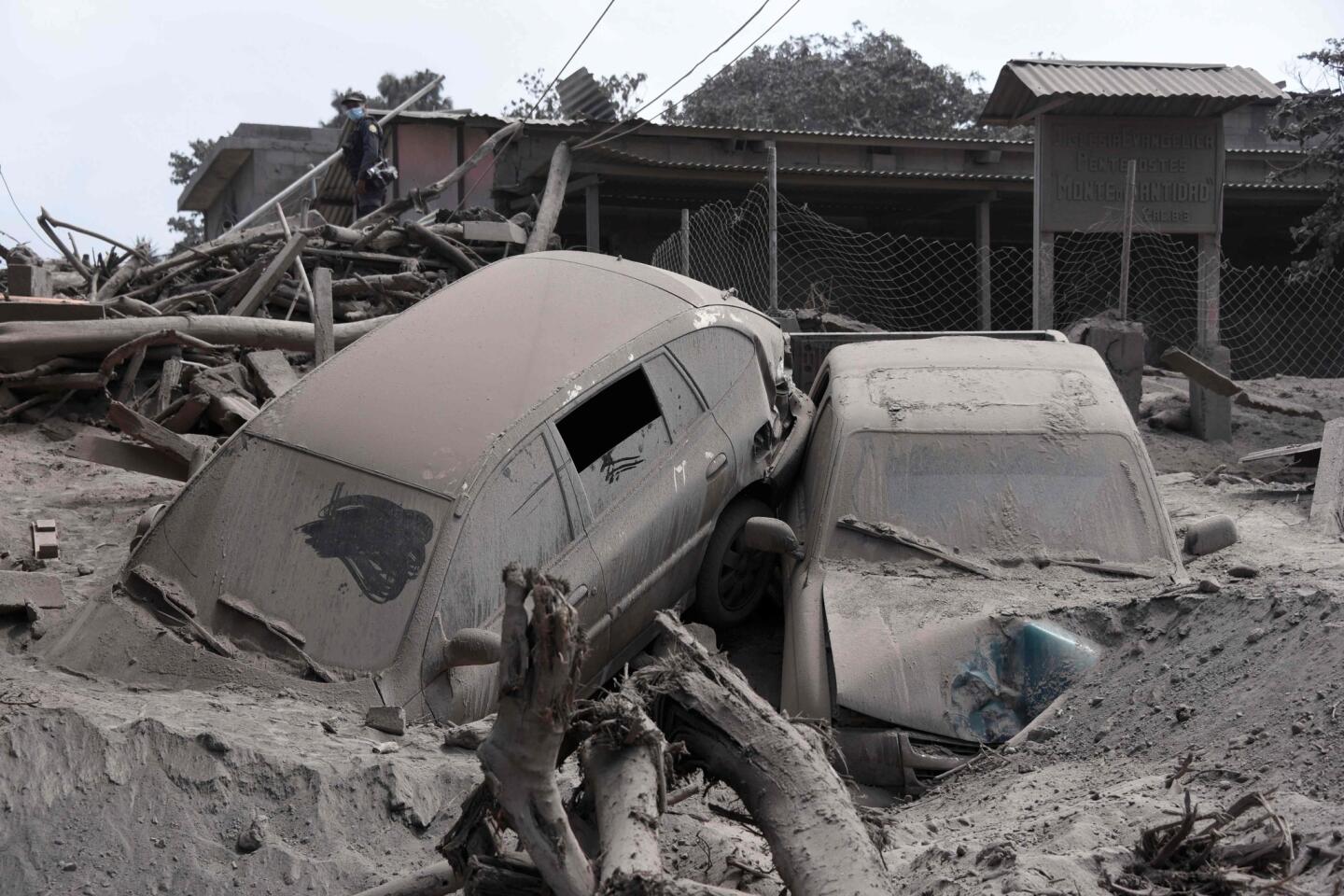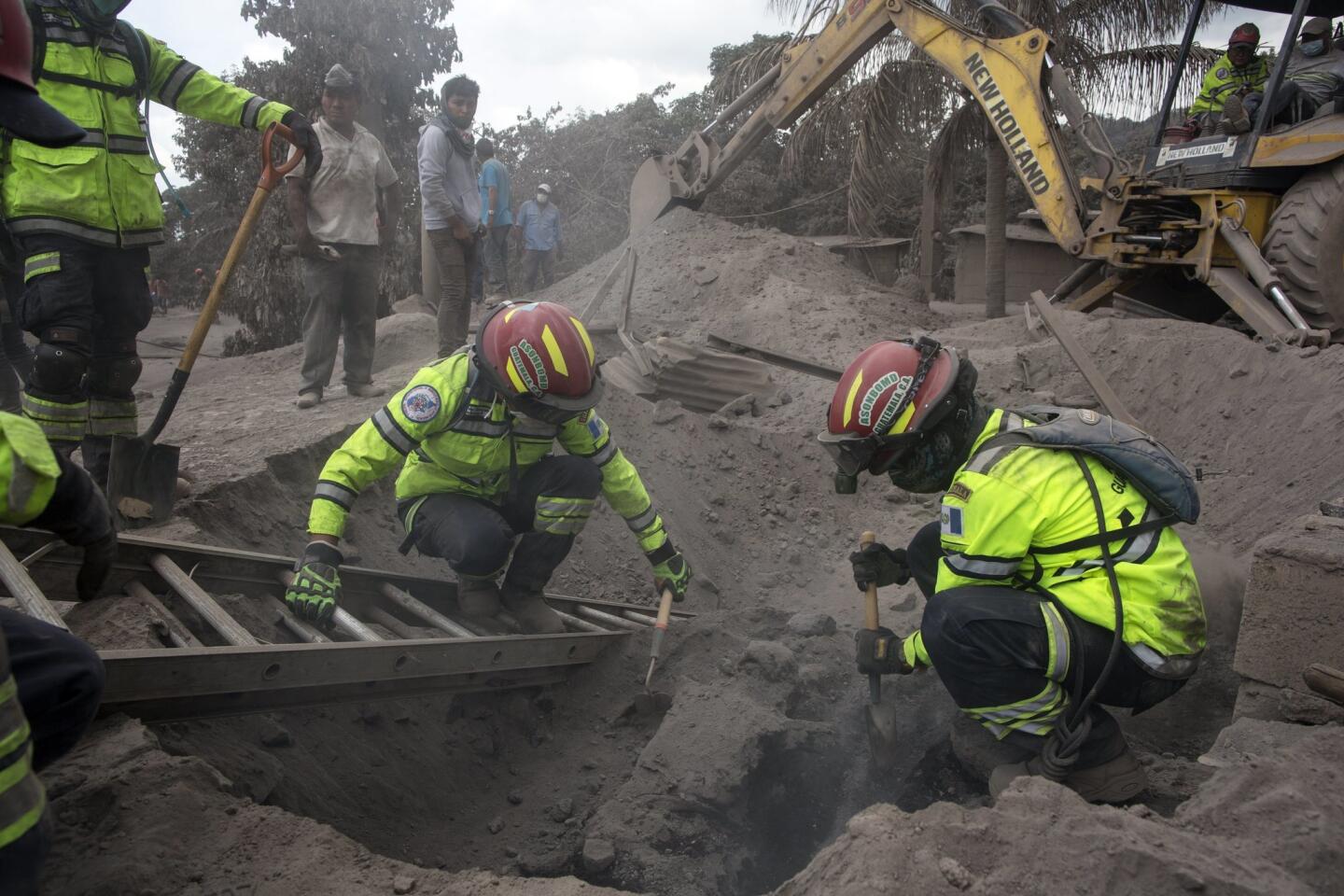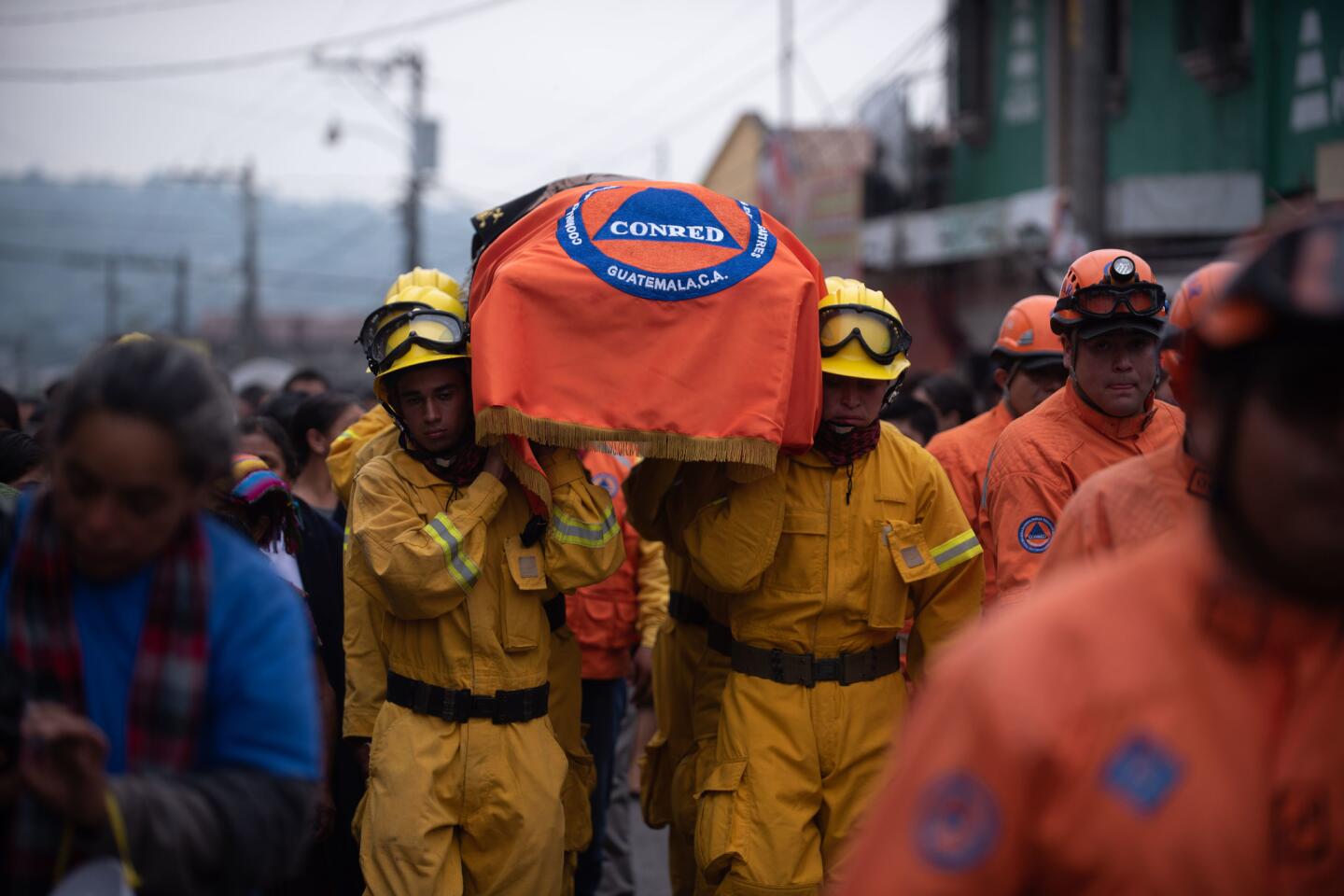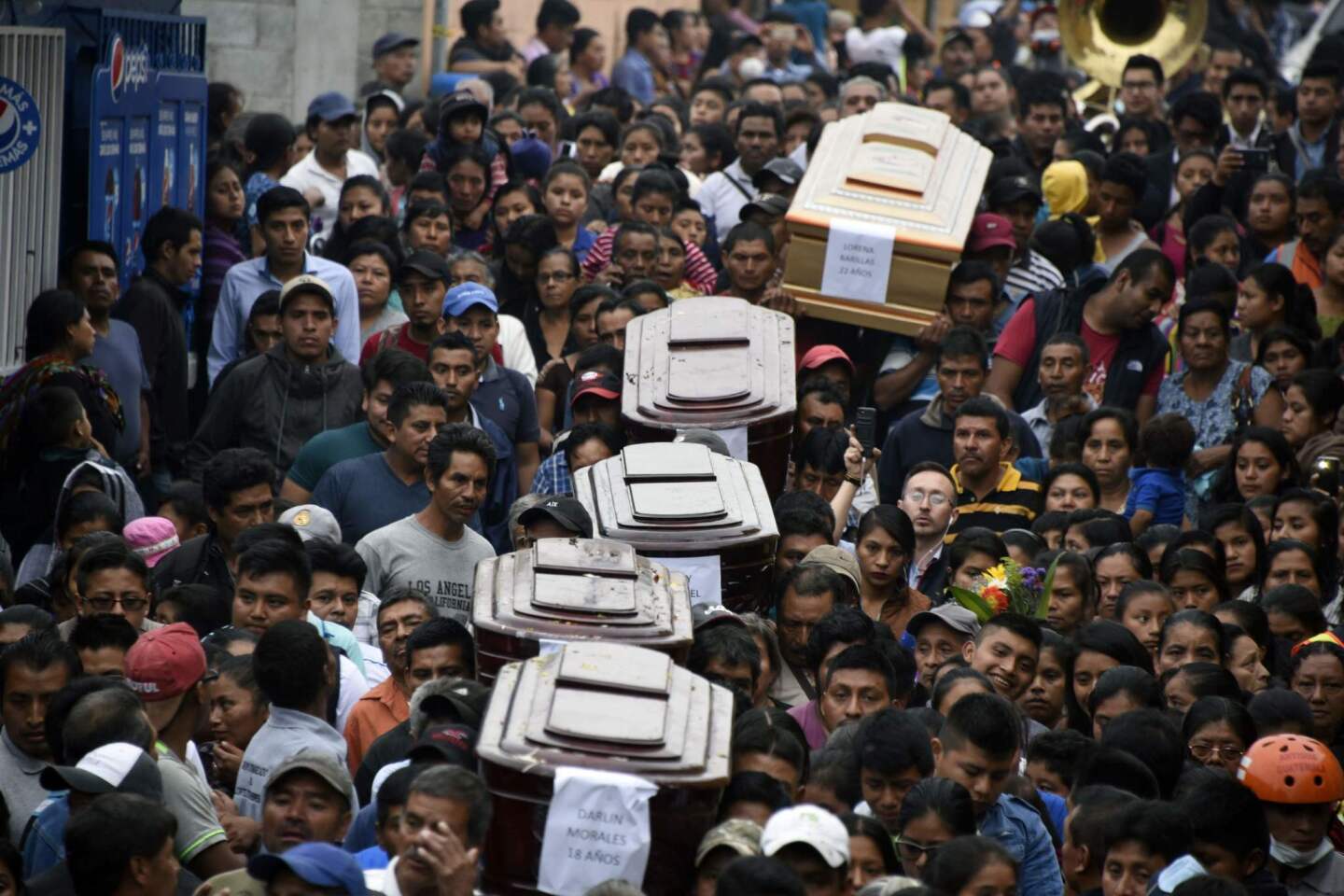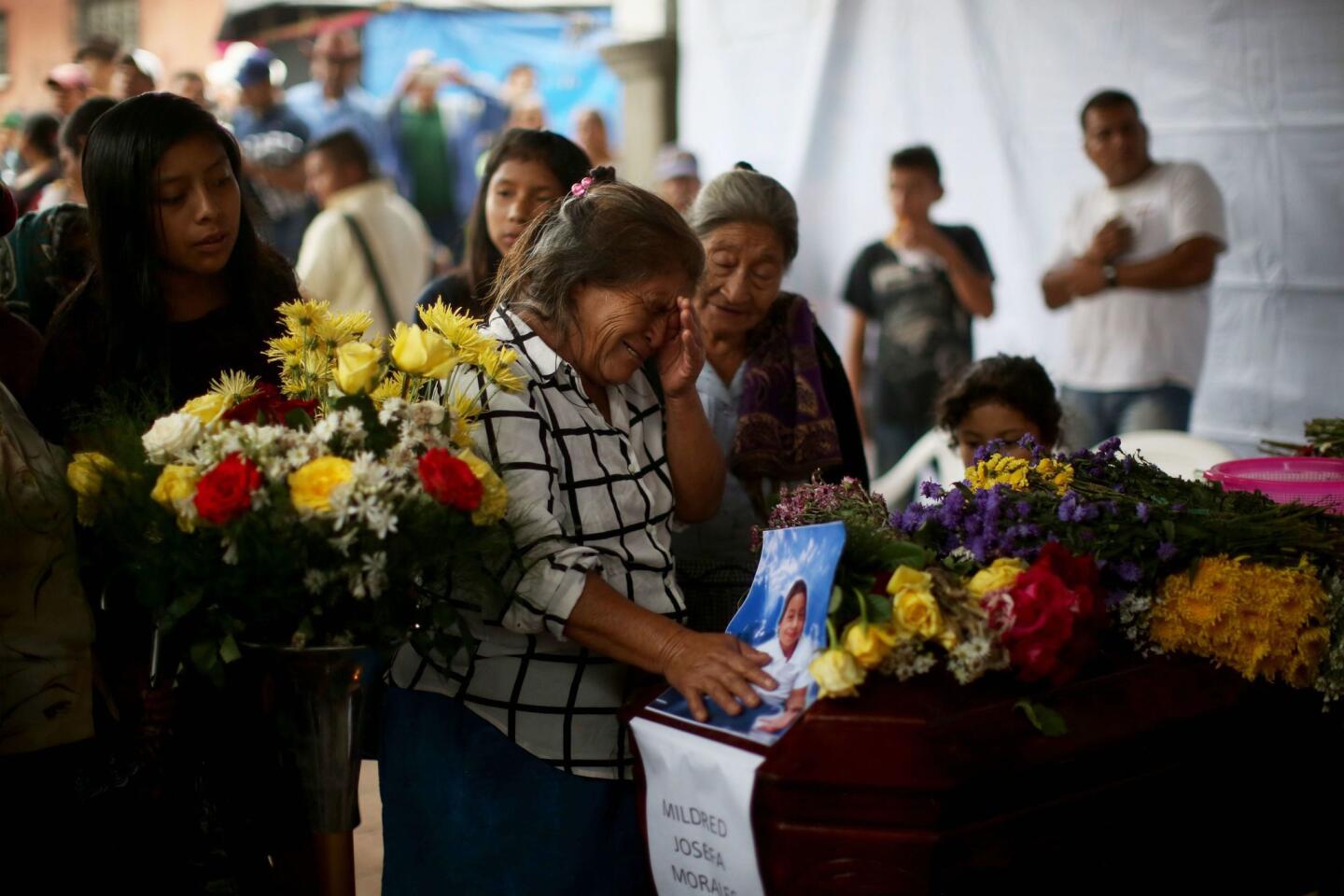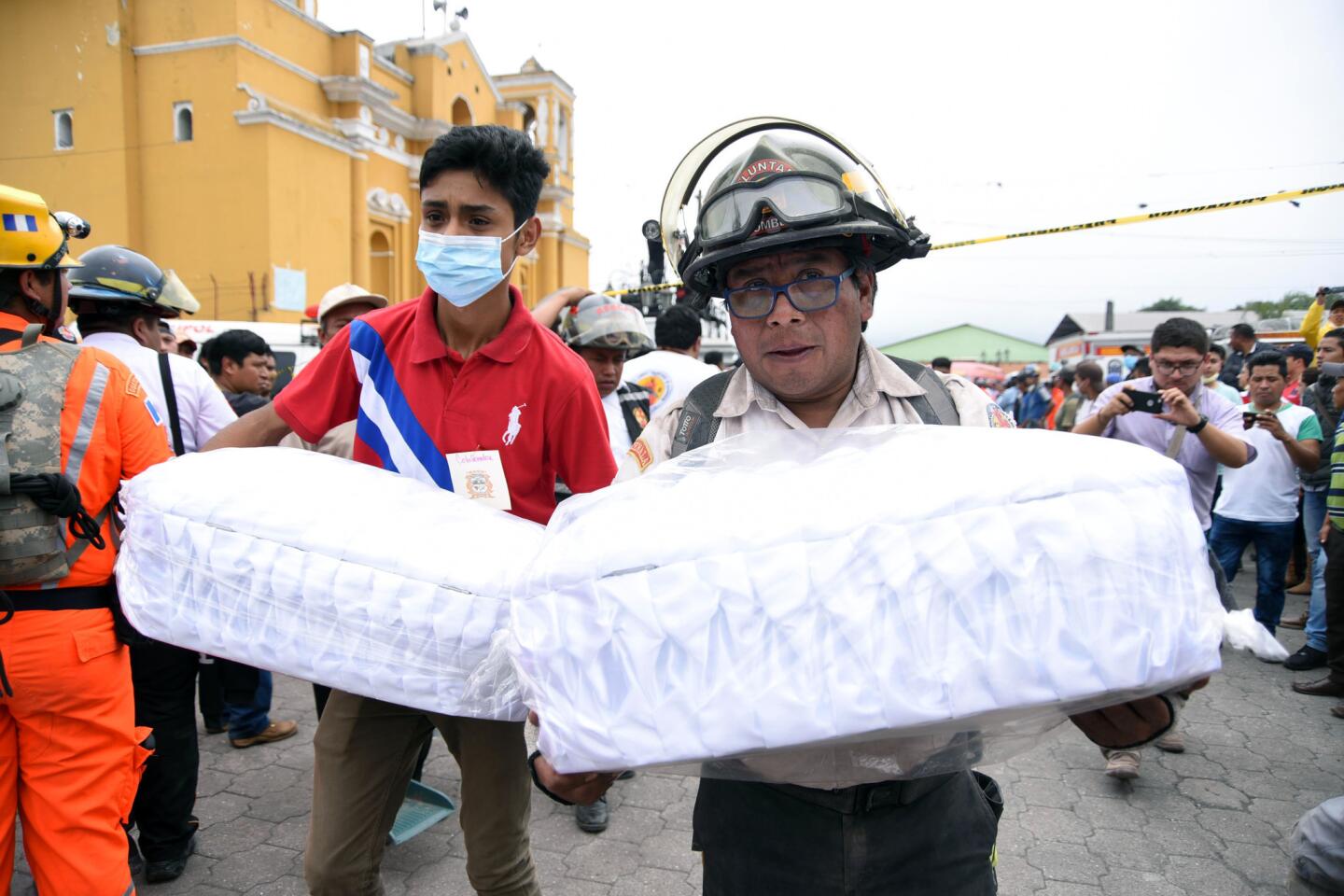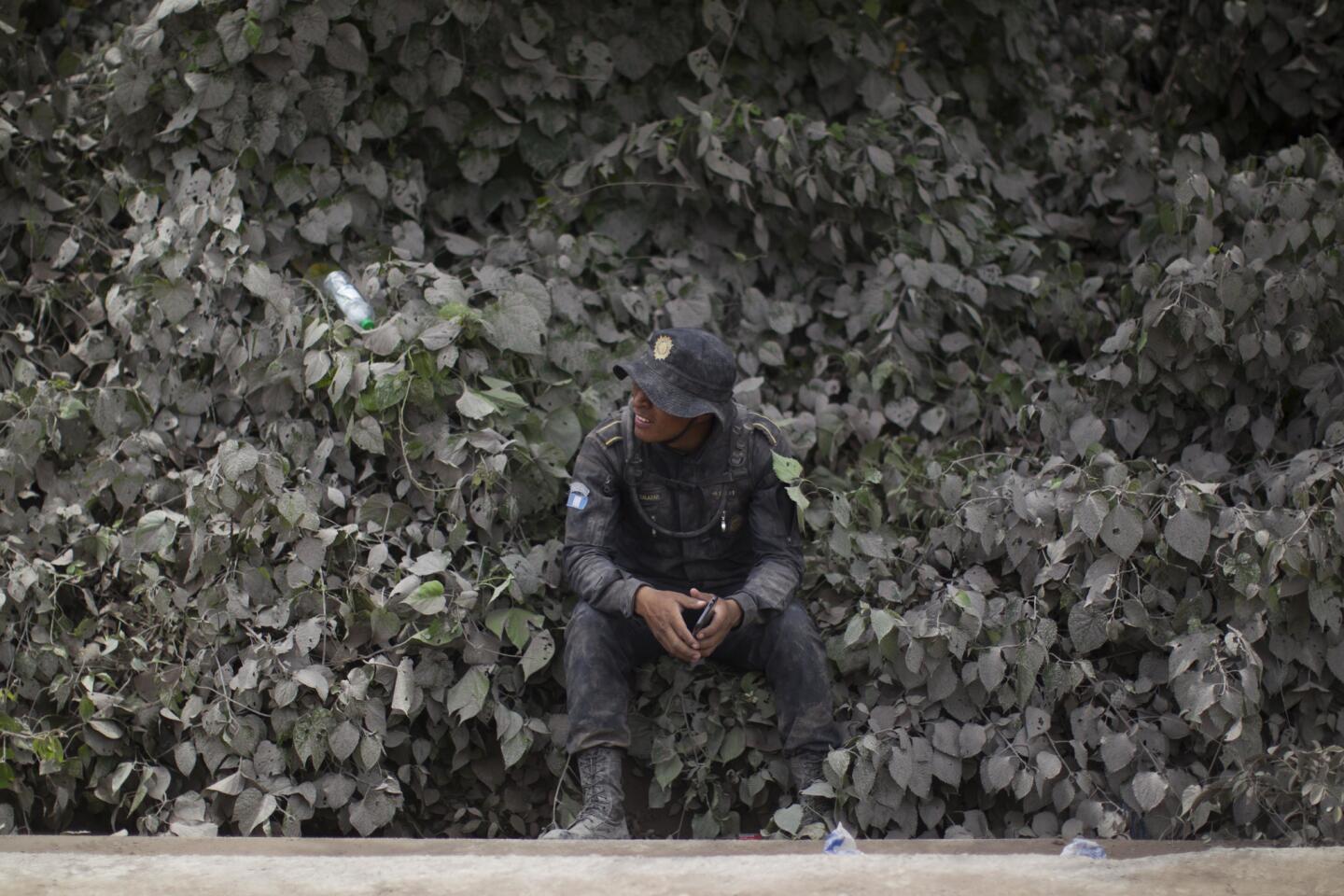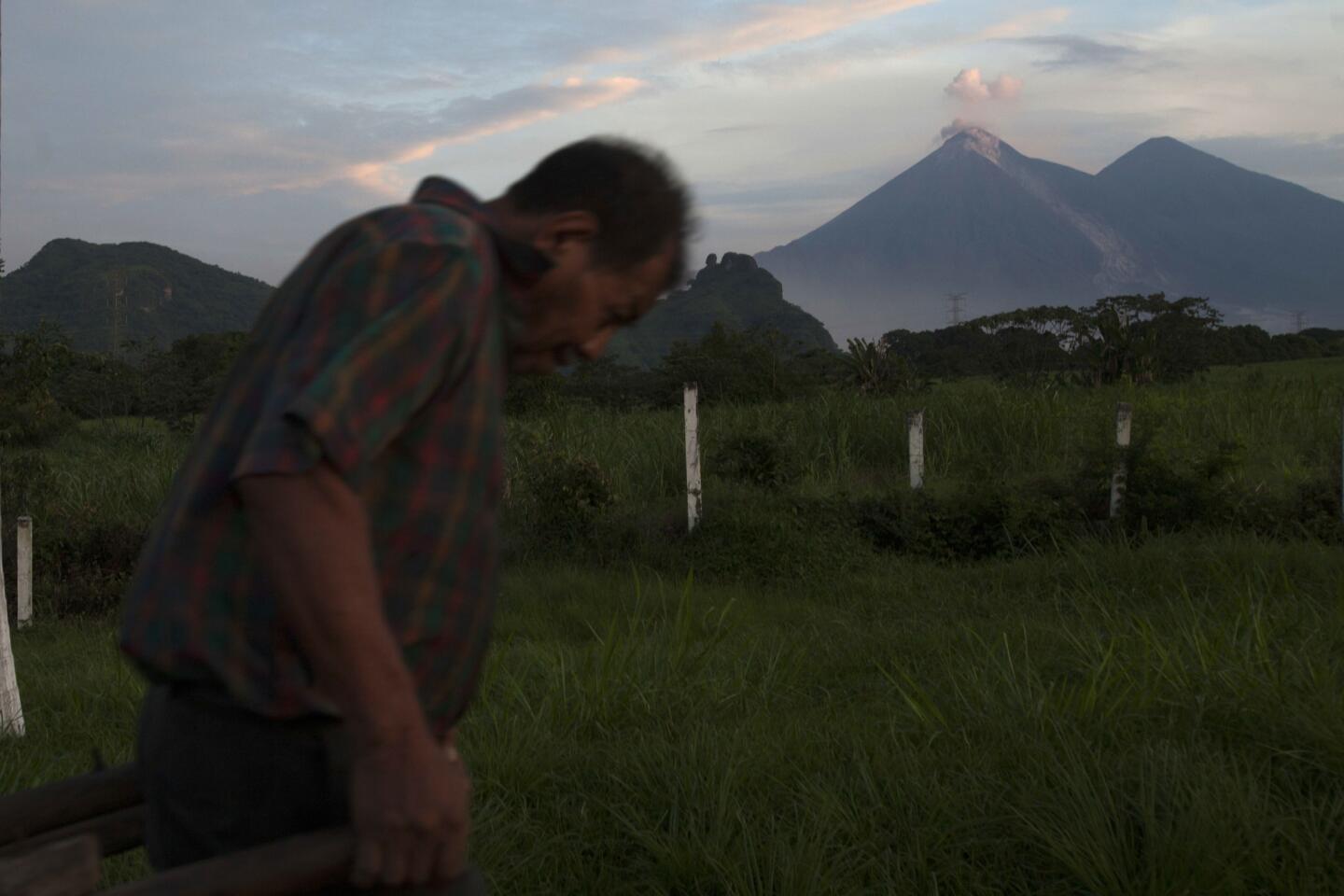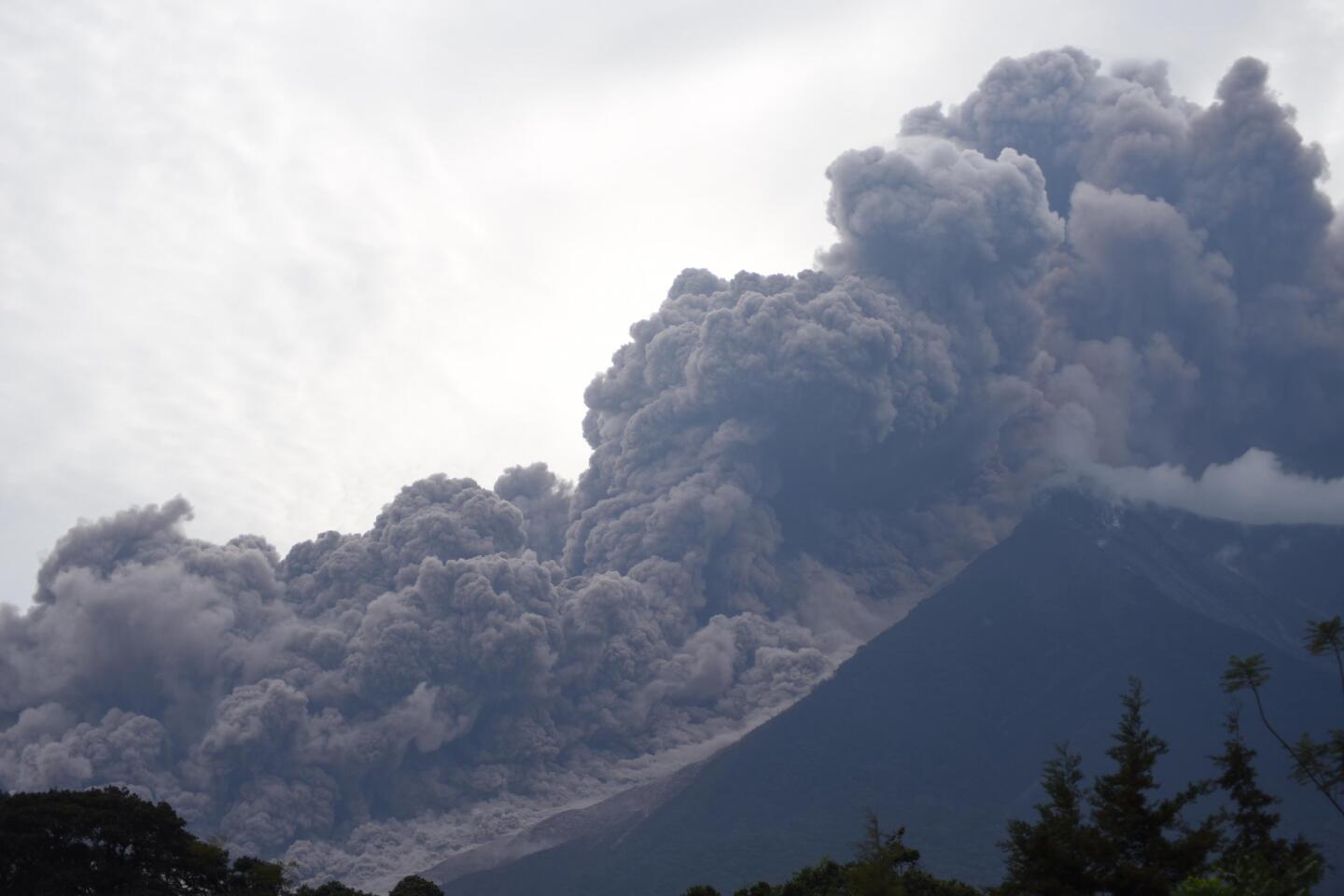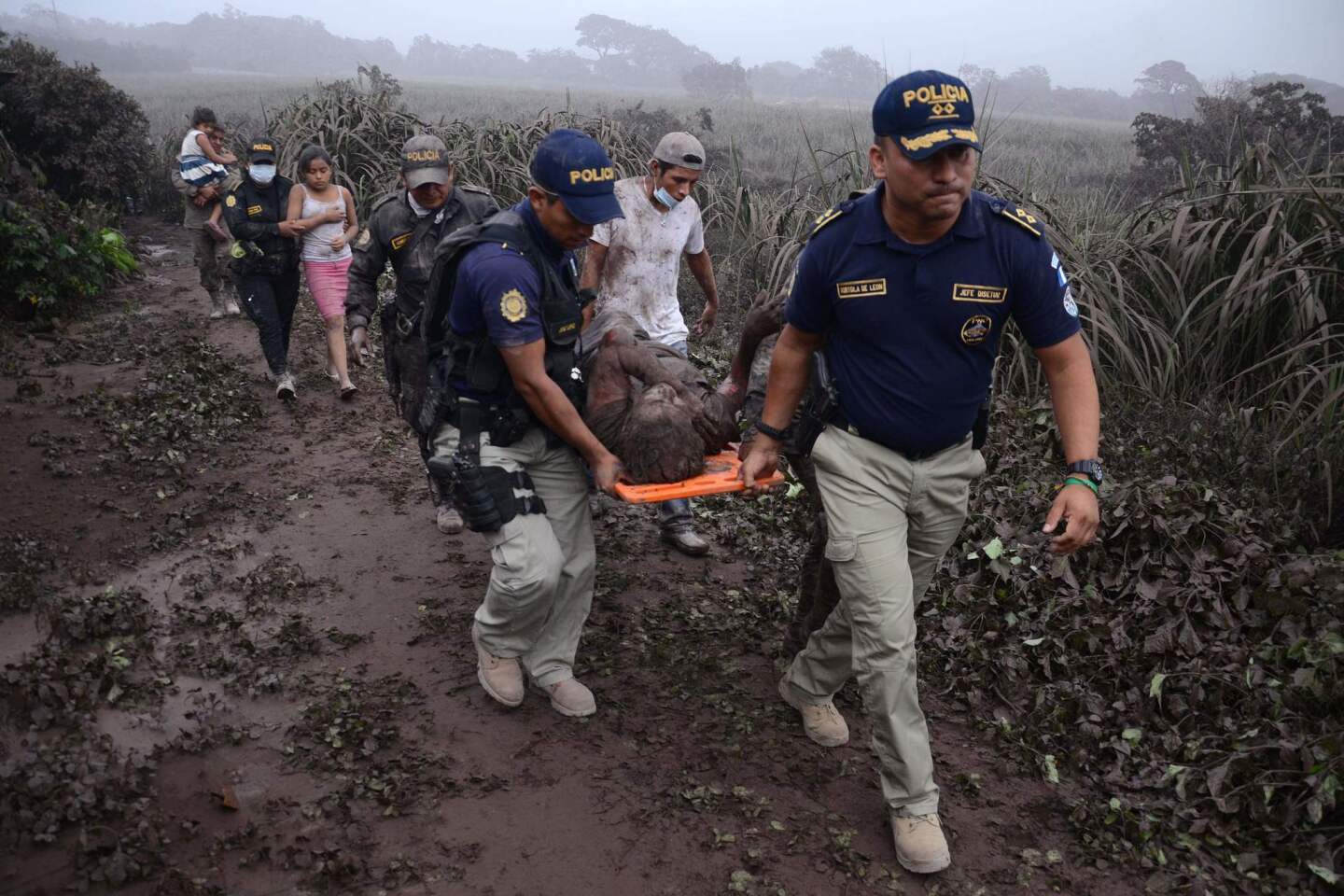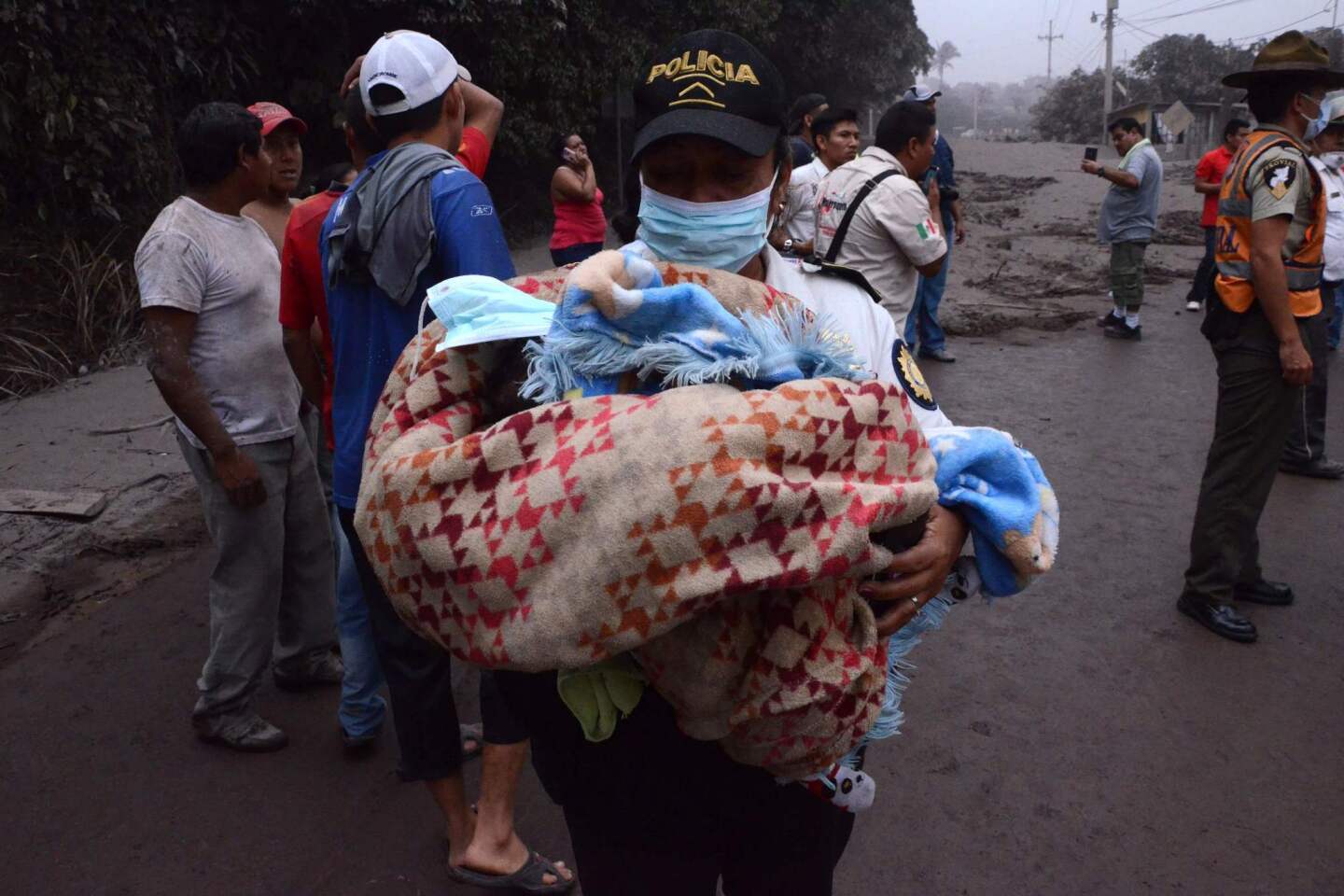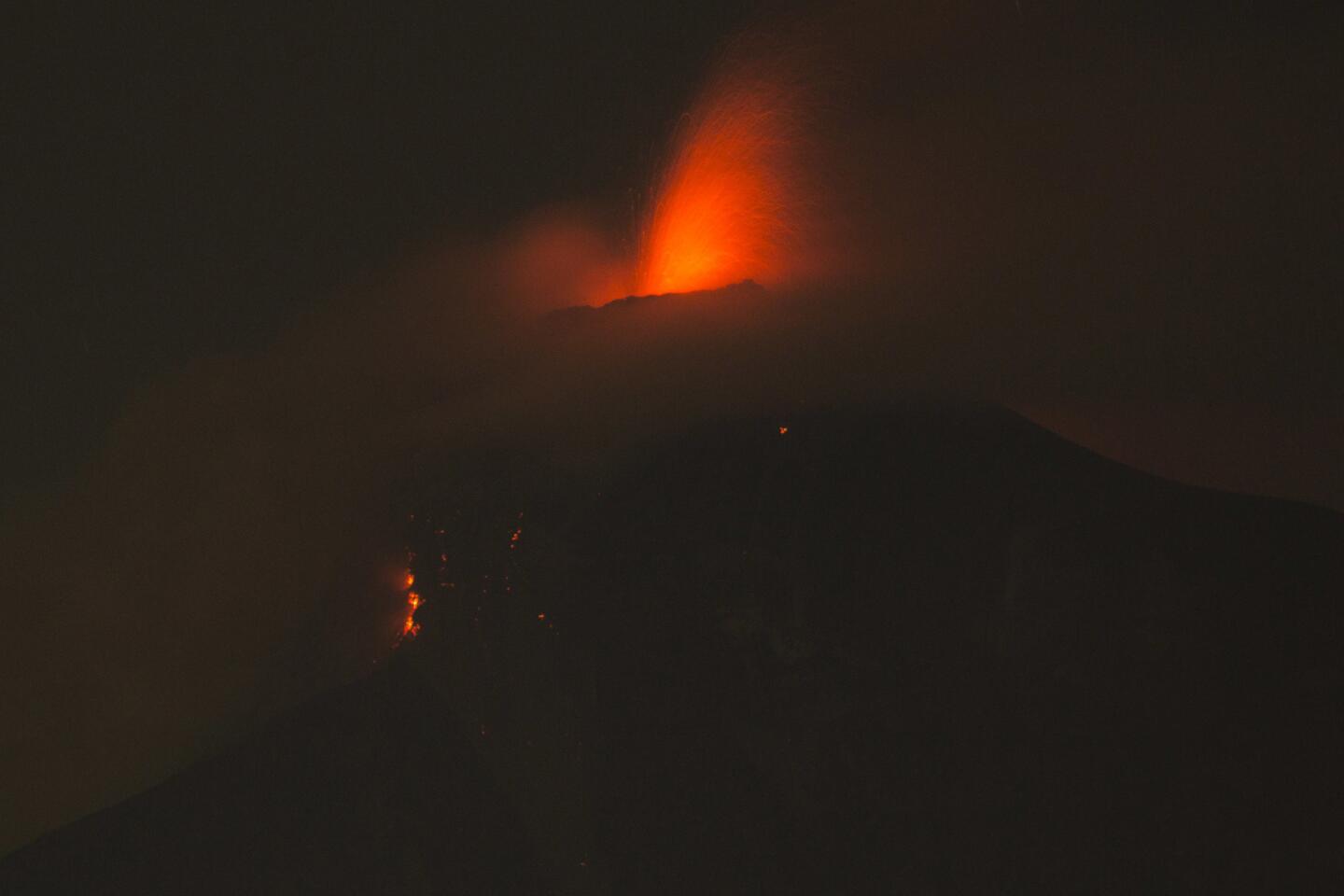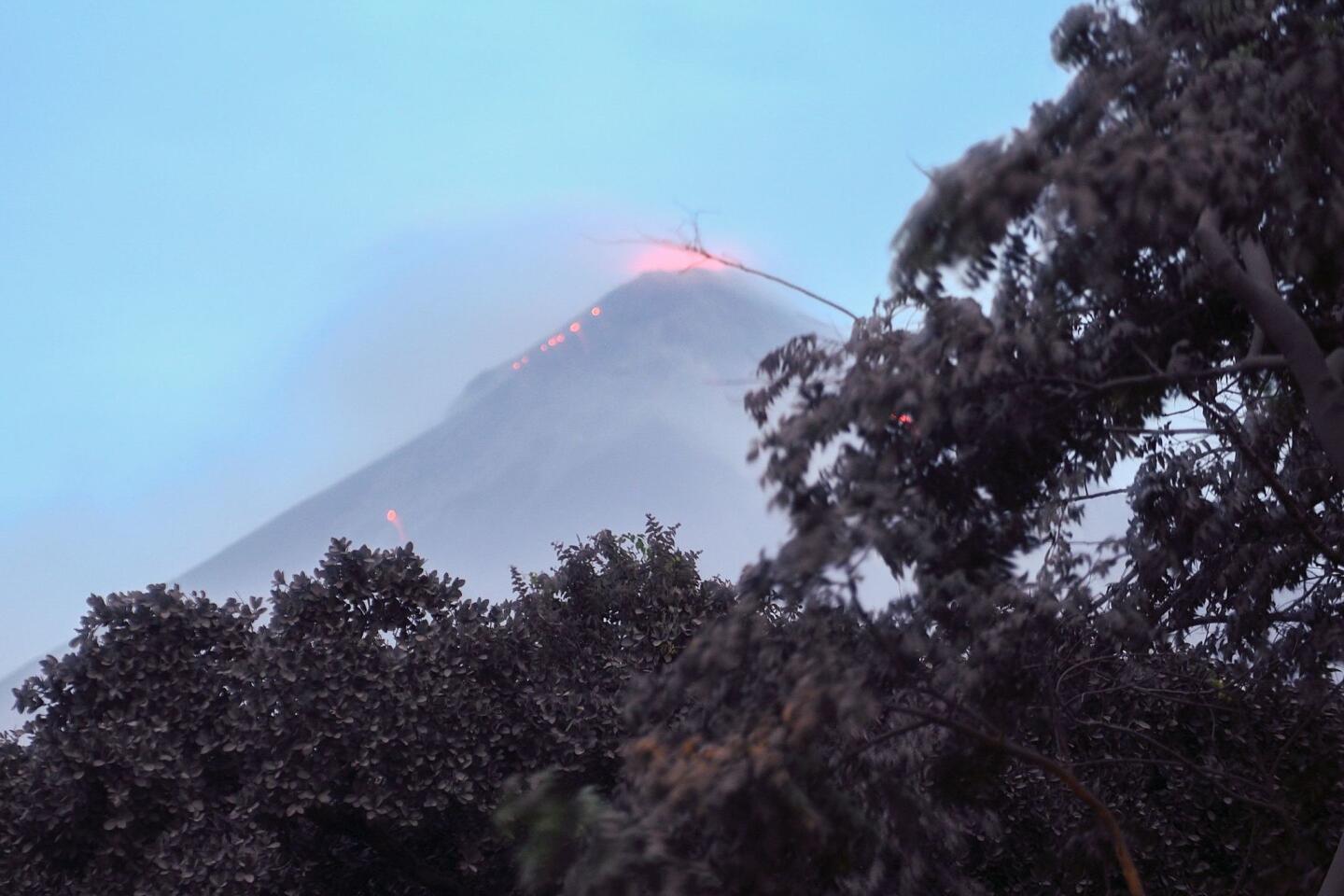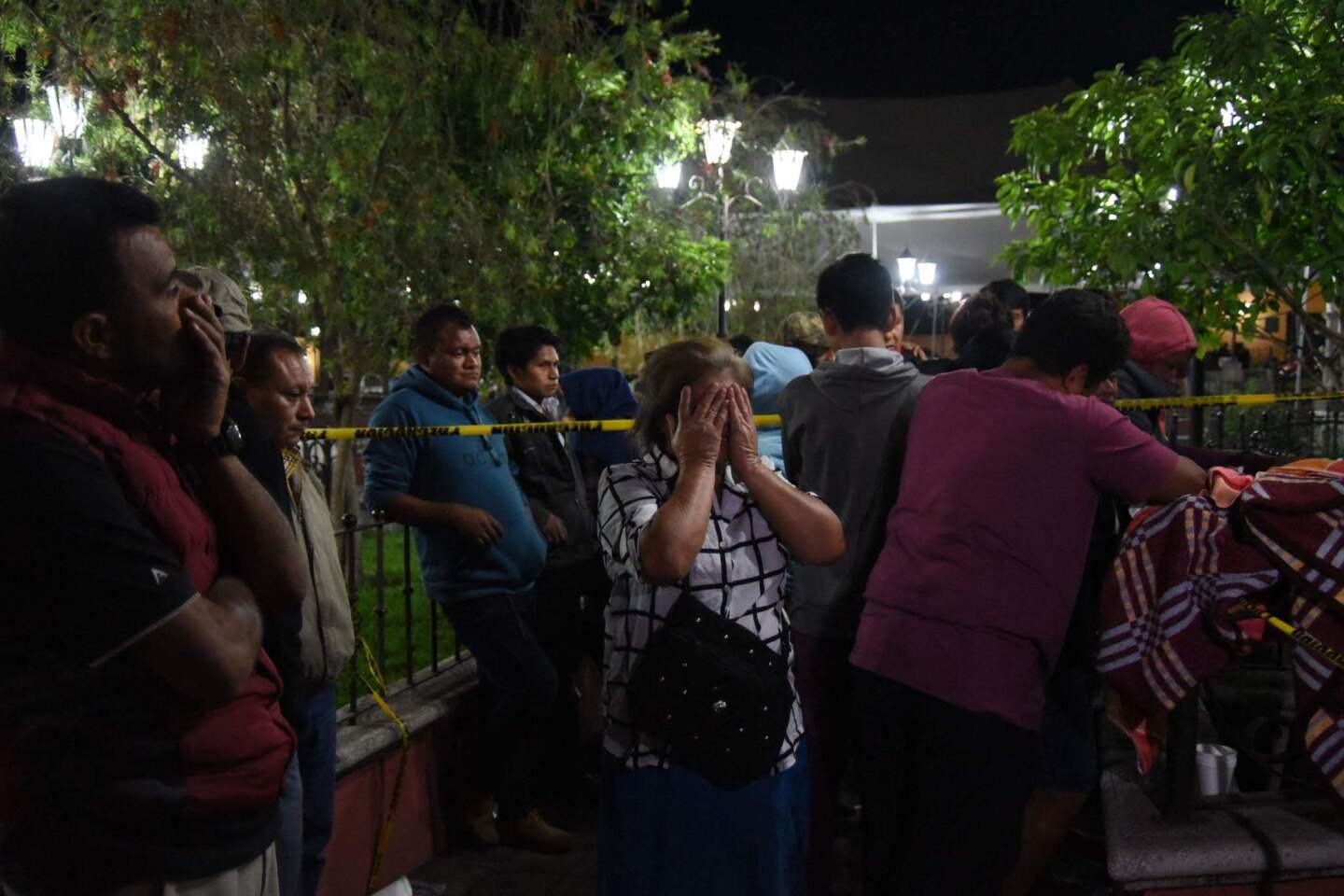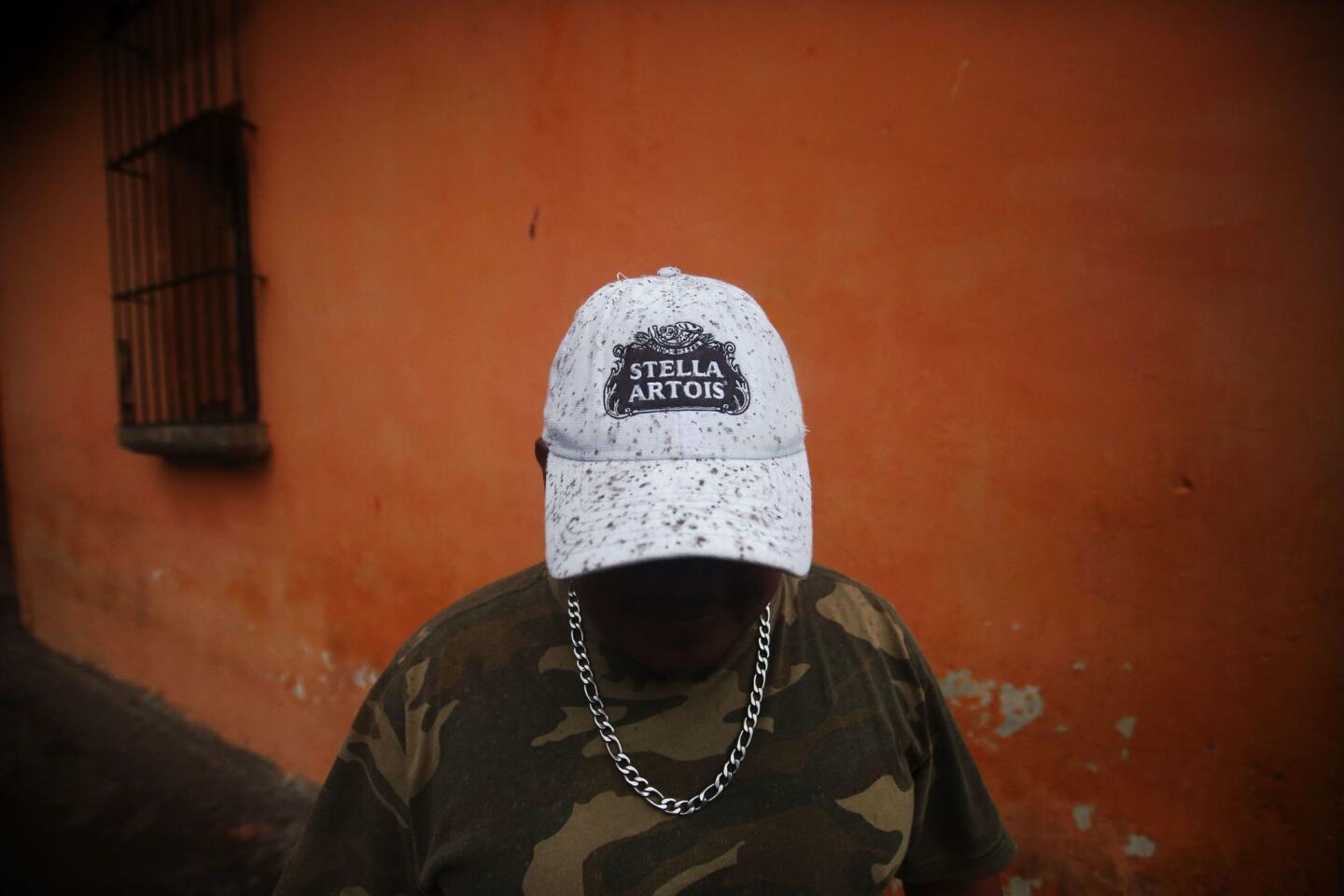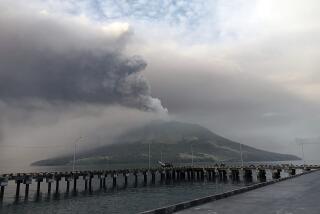Only a few of Guatemala volcano’s dead have been identified
- Share via
Reporting from Escuintla, Guatemala — Two days after Guatemala’s Volcano of Fire erupted and killed dozens of people, it went off again Tuesday, sending lava down its sides toward the communities below and forcing emergency crews to suspend rescue operations.
Rescue efforts already had been hampered by a lack of power and hazardous conditions, according to the country’s disaster relief agency, known as Conred.
The smoldering terrain was so hot that it melted the rubber soles of shoes, forcing rescue workers to lay out wooden planks to walk on. Many were having difficulty breathing and navigating debris to get to areas that need to be searched, according to media reports.
“Access to the villages is very difficult,” said one worker, Francis Vasquez. “We have to enter through the roofs.”
Authorities ordered evacuations of the surrounding communities, including the city of Escuintla, which became a scene of chaos as fleeing residents clogged the roads.
“Lava is coming, by the Cantil river!” Edward Garcia yelled as he ran off with his family.
Guatemalan authorities said 72 people have been confirmed dead as a result of Sunday’s midday eruption. The toll is expected to rise when rescuers make their way to hillside settlements that have yet to be searched.
Before rescue efforts stalled Tuesday, crews were combing through the hardest-hit villages in search of victims. Helicopters evacuated people from areas where rescue workers had not set foot, officials said during a news briefing.
Amid the army of workers are hundreds of volunteers assisting with rescue and recovery efforts.
“We’ve come to help out of sympathy for the friends that have died,” said Gilberto Antonio Sac, a 20-year-old volunteer in the village of El Rancho.
In the rural community of San Miguel Los Lotes, emergency crews combed through homes and dug through layers of ash. Aided by dogs and shovels, the crews pulled out 18 bodies, including four children and their pregnant mother.
Meanwhile, survivors there desperately searched for missing relatives in various shelters as well as in several morgues, including makeshift facilities set up as bodies were being discovered.
William Chavez was crying because he couldn’t find his brother.
“He doesn’t appear anywhere and nobody is giving me a reason,” Chavez said.
Inside a morgue, Alex Rogelio Hernandez, 31, said he has been unable to find his sister and nephews.
Hernandez said he never expected the eruption to be so destructive. “Los Lotes was a pretty nice village, there was a lot of vegetation, avocados, wild animals,” he said.
As of Tuesday, only 17 bodies had been identified, according to Guatemala’s National Institute of Forensic Sciences. Most of the victims were from the city of Hunapu in the state of Escuintla, where 47 of the 54 bodies had yet to be identified.
Guatemalan President Jimmy Morales has called for three days of mourning.
Loved ones wept over caskets lined up in the main park of the town of San Juan Alotenango, according to the Associated Press.
The steep volcano rises 12,346 feet above sea level and sits about 25 miles west of the capital, Guatemala City.
One of Central America’s most active volcanoes, it has long emitted wisps of ash and gas every 15 to 20 minutes.
Sunday’s eruption was the biggest since at least 1974 and especially deadly, having caught many living near it by surprise.
It spewed billowing clouds of ash into the sky and sent a mixture of lava and ash that turned homes into ovens and left a landscape of mangled cars, charred vegetation and buried villages.
More than 3,000 people have been displaced. Hundreds were injured and dozens more remained missing, according to the disaster agency. It said the volcano eruption has affected a total of 1.7 million people.
Settlements surrounding the base of the volcano saw the worst of the devastation.

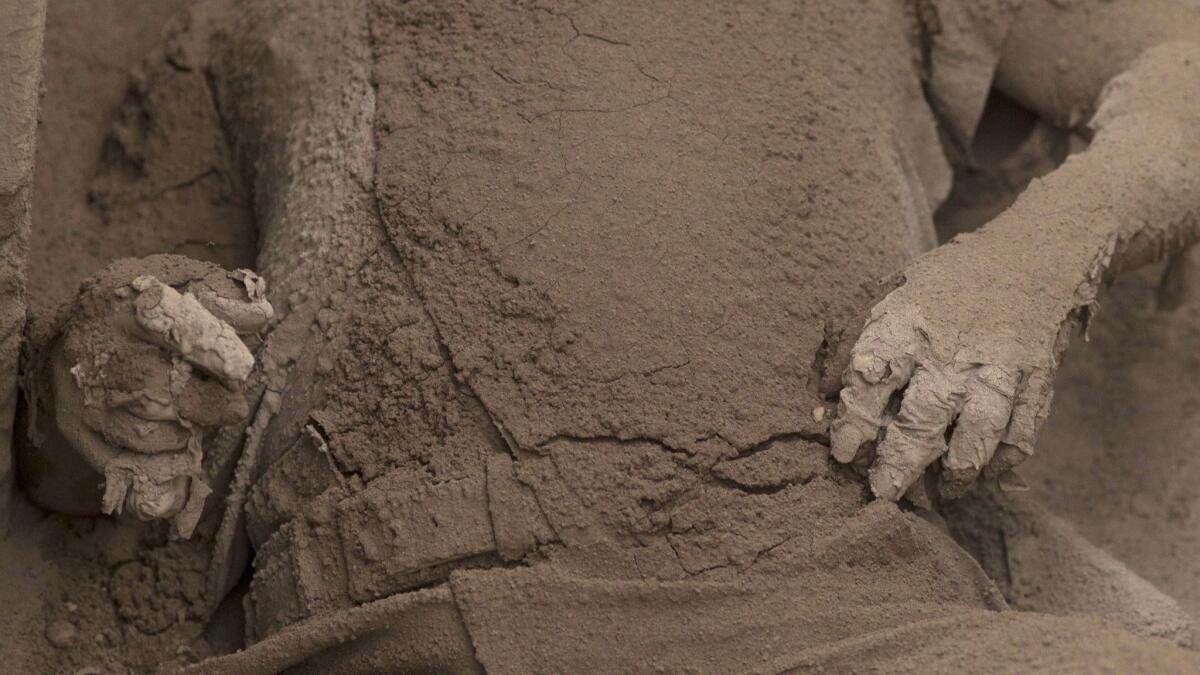

Special correspondent Gamazo reported from Escuintla and Times staff writer Vives from Los Angeles.
UPDATES:
8:15 p.m.: This article was updated with staff reporting about the eruption and the stalled rescue effort.
This article was originally published at 8:20 a.m.
More to Read
Sign up for Essential California
The most important California stories and recommendations in your inbox every morning.
You may occasionally receive promotional content from the Los Angeles Times.
